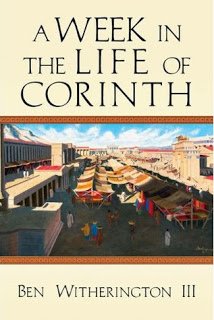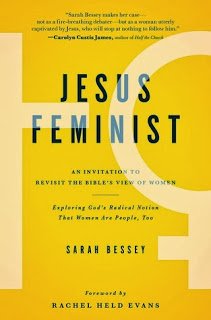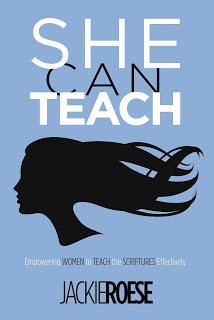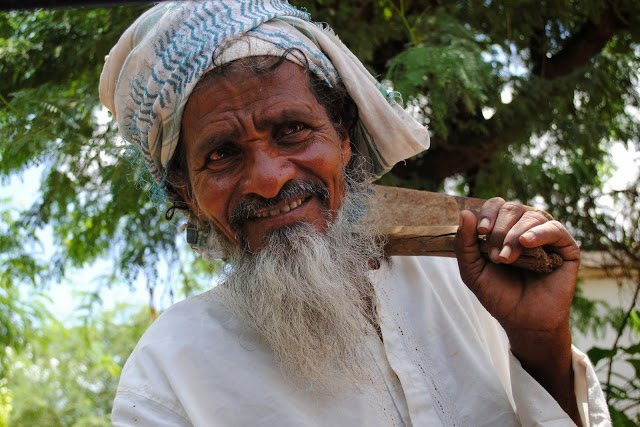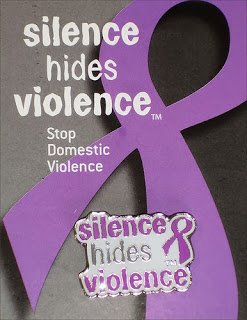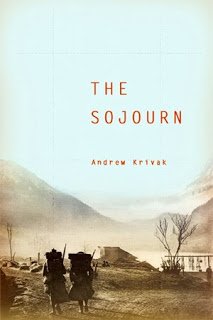
Blog & Resources
Looking for my thoughts on everything from bioethics to movies? You came to the right place. And while you’re here, check out my free downloadable resources.
Sign up to be notified when new posts release.
Black Friday Cyber Deal!
Today only if you order two books via my web site (www.aspire2.com), I will send you a copy of the newest book, Chai with Malachi for free. If you any of them "signed by the author" to give as a gift, simply indicate that in the comments section of your order.
Amazon Associates
If you access Amazon by going there through the above link, we receive a small percentage back from your purchase. All proceeds benefit our work in Kenya.
Is Peter Insulting Women? (Part 1)
My Tapestry post for the week:
A Week in the Life of Corinth
The total effect is the mirror of what happens when fictionwriters don’t know about biblical backgrounds, so they write the Esther storyas a romance. Here a biblical scholar has not mastered the art of writtenstorytelling. And we need both excellent storytelling and good background expertise.(Ben-Hur is an example of a work thatweds the two fields in a way that gives readers a story for the ages.)
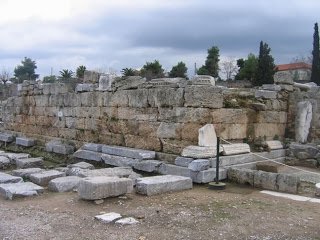 |
| Paul would have been familiar with the "bema" or judgment seat in Corinth. |
Magazine Readership Rises
ETS: Adventures in Baltimore
Join in Helping Transform Dallas
A movement is taking place in the Dallas Christian community to bring about measurable change against the greatest spiritual, social and humanitarian challenges of our time. On January 23, 2014 more than 1,500 leaders from the marketplace, church, and community will gather for Greater Dallas Movement Day (GDMD), a one-day event that will include leaders in business, education, healthcare, nonprofits, government, and the church from a diverse array of cultural and ethnic backgrounds.
Speakers for GDMD include Mayor Mike Rawlings, Dr. Tim Keller, Pastor Brian Carter of Concord Baptist Church, and Dr. Albert Reyes of Buckner International with emcee Froswa Booker-Drew, the National Community Engagement Director for World Vision. The scope of GDMD extends beyond sharing information and motivation. It¹s about results. Participants will choose one of ten afternoon sessions covering a range of issues affecting Greater Dallas with the goal of crafting five-year plans to mobilize the faith community.
An initiative of the New York City Leadership Center, Greater Dallas Movement Day replicates the successful model of Movement Day in New York City, an annual event that has been linked to a 300% increase in the Christian population of Manhattan. From 2010–2014, nearly five thousand leaders from 360 cities worldwide have gathered to learn best practices in urban ministry and to cast a fresh vision for their own cities.
Movement Day is directed by Dr. Mac Pier, CEO and Founder of The New York City Leadership Center. Pier believes the Dallas faith community is poised to foster such a movement. Poverty. Hunger. Crime. Child Neglect. A Broken Education System. The problems can seem insurmountable, but each grim statistic also offers an opportunity to transform individuals and communities with the love of Jesus Christ.
³The Greater Dallas area is at a crossroads. Given the growing racial, social, and spiritual diversity, it is urgent to bring a critical mass of the Dallas Christian community together to foster visible unity, hear the same research, and co-create and further best practices that will impact the city. We believe that the Movement Day model that catalyzed such remarkable growth in Manhattan will bring similar results in Greater Dallas. —Mac Pier
Why does Dallas need a gospel movement? The facts and statistics speak for themselves:
• 90 % of Dallas ISD graduates are not college ready
• The number of North Texans seeking help from food pantries or soup kitchens each week has risen 80 % since 2006.
• 29.3% of children in Dallas County, more than 190,000 children total, live in families below the federal income poverty level.
• 44% of the residents in DFW are first- or second-generation immigrants in need of church connection.
• 25% of all international human trafficking victims in America are in Texas.
• Dallas is home to the largest refugee population in the U.S.
Greater Dallas Movement Day will be held at the Dallas Convention Center on January 23, 2014 from 9 AM to 5 PM.
For more information, a complete list of afternoon sessions, and to register for GDMD, visit www.greaterdallasmovementday.com.
Interview with Faith Village
My pal Kelley Mathews over at Faithvillage.com interviewed me about my latest book, Chai with Malachi. Head on over and leave a comment.
Typhoon Survivor: "Tell My Family I'm Alive"

Street scene in destroyed Tacloban. "I've never seen such a violentforce that destroyed everything in its path. It's really large scale. It'simmense," said Aaron Aspi, WV Philippines Emergency CommunicationsSpecialist. Photo by Mai Zamora.
|
LEYTE, PHILIPPINES (ANS) -- Survivors ofTyphoon Haiyan are sharing their desperate need for food and medicine afterlosing everything in the storm.
According to a story by Britain's Sky News, one woman, eight months pregnant, described through tears how her 11 family members vanished in the storm—which devastated parts of the Philippines—including two daughters.
"I can't think right now. I am overwhelmed," she said.
Erika Mae Karakot, a survivor on Leyte island, said "Please tellmy family I'm alive. We need water and medicine because a lot of the people weare with are wounded. Some are suffering from diarrhoea and dehydration due toshortage of food and water."
PNS said the initialresponse will include the provision of non-food items, material resources,drinking water, emergency shelter kits and cash-for-work programs.
Jesus Feminist, by Sarah Bessey
For a lot of folks inside the church and out, the word "feminist" is the other "f" word. The very thought of putting it next to the name of Jesus, as Sarah Bessey has done in the title of her new book, Jesus Feminist, will drop jaws. Or cause them to clench. Some might make negative assumptions about the author's agenda.
If so, they would be wrong.
In the same way that John Piper calls himself a Christian hedonist and then defines the phrase as he is using it, Bessey uses and defines being a "Jesus Feminist."
Jesus took women seriously; he taught women; he talked to women even when it scandalized the disciples; he accepted financial support from women; he entrusted the core facts of the faith, on which all our doctrines are built, to women… That's the kind of feminist Bessey aspires to be and wants her readers to be. In a world in which females across the world are raped, trafficked, abused, aborted based on their sex, prohibited from getting an education—into that world, she calls men and women to advance the kingdom of Christ, shoulder to shoulder, on behalf of "the least of these."
This book is so not for those seeking a fight about women's rights, especially in the church. Bessey writes, "We are among the disciples who are simply going outside, to freedom, together, intent on following Jesus; we love him so. We're finding each other out here, and it's beautiful and crazy and churchy and holy. We are simply getting on with it, with the work of justice and mercy, the glorious labor of reconciliation and redemption, the mess of friendship and community, the guts of walking on the water, and the big-sky dreaming of the Kingdom of God."
Bessey's tone is loving, affirming, encouraging, and courageous. Of her own journey, she writes, "I won't desecrate beauty with cynicism anymore. I won't confuse critical thinking with a critical spirit, and I will practice, painfully, over and over, patience and peace until my gentle answers turn away even my own wrath. I will breathe fresh air while I learn, all over again, grace freely given and wisdom honored."
And to that I say, "Amen, sister!"
She Can Teach, by Dr. Jackie Roese
Dr. Jackie Roese (pronounced “Reese”) has been teachingwomen for a long time. And doing it well. Reallywell. The woman can preach. She’s even trained lots of others to do thesame.
The book is not about how to study the Bible as part of thepreparation process. Other works tell how to do observation, interpretation,and application. Surprisingly, it also does not include the exegetical/ theological/ homileticalprocess—that is, how to explore the text’s original audience, determine what inthe text is timeless, and craft a message for today’s audience. But she doescover how to analyze one’s audience, come up with the central proposition,craft an outline, provide supporting material, find an interesting hook, and providea strong conclusion. She also gives excellent suggestions for creativebrainstorming in community.
PCPC in Dallas to Kick Off Arts Festival
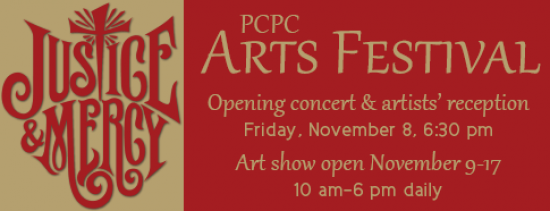
Justice and Mercy (Micah 6:8)Three themes:Live JustlyLove MercyWalk Humbly with your God

Are we just making things — or making things just?
Friday, September 6, 7:00 – 9:00 pm
Calvin's Festival of Faith and Writing
Bioethics in the News
How the Church Can Better Serve Victims of Relationship Violence
The Sojourn
Mark the Date: 3 November
The second half of the twentieth century was an era of amazing progress in Christian mission and church growth. In 1960, about 80 percent of the Church was white, Western, and middle class. By 2000, about 80 percent of the Church was non-white, non-Western, and poor. This has not been due a decline in the West, where the percentage of Christians has remained fairly constant. Rather, it has been due to phenomenal church growth in the non-West where Christian radio, the Jesus film and an explosion of indigenous ministries have seen multitudes turn to Jesus Christ.
But...church growth will always trigger a backlash, a spiritual counter offensive.
In November 1998, in an effort to address the problem of escalating religious persecution—particularly the escalating persecution of religious minorities outside the West—the U.S. enacted its International Religious Freedom Act which tied foreign policy to international religious freedom by mandating that severe violators be sanctioned. In response to this Act, dictators around the world reigned in hostile elements and tinkered with reform for the sake of aid and trade. But when the U.S. housing bubble burst in Aug-Sept 2008 and the U.S. lost its economic leverage, the Act lost its teeth and persecution immediately escalated. Today, Christians around the world are facing not just hostility, but displacements and massacres on a scale not seen in a century. We have entered an era of great persecution the likes of which has not been seen in our lifetime.
In Galatians 6:2 the Apostle Paul exhorts us to "Bear one another's burdens, and so fulfill the law of Christ" [i.e. the law of love]. We must speak out and extend aid. Above all, we must get serious about the serious business of intercessory prayer, which is advocacy in the courts of heaven.
The International Day of Prayer (IDOP) for the persecuted church will be observed this year on 3 November 2013. On that day, people around the world will pray in solidarity for the persecuted church.
Maybe We Can Meet?
Here's my travel and speaking schedule for the next six months. Maybe we can meet up?
2013
Oct 23 "Liberating Your Ministry from the Busyness Syndrome," Rural Home Missionary Association (RHMA) Conference, Lakeview Camp and Conference Center, Waxahachie, Texas
Nov 2 McGregory Literary Marketing Seminar, Chicago O'Hare Embassy Suites (attending)
Nov 11 7 PM "Marriage According to Eph 5:21ff," women of Christ Chapel Plano, Texas
Nov 13 "Writing for Publication: For the Church and Community," Biola/Talbot, La Mirada, California (via Skype)
Nov 19–22 Evangelical Society National Meeting (attending), Baltimore, Maryland
Dec 10–18 Northern Italy (based in Vicenza) – PWOC event TBA
2014
Feb 19–22 Presenting, Writing Research Across Borders Conference, Paris, France
Feb 28 Poiema Arts Conference, sponsored by the Center for the Study of NT Manuscripts (CSNTM), The Hope Center, Plano, Texas
April 10–12 Calvin Festival of Faith and Writing, Grand Rapids, Michigan (attending)
April 14 Chapel, Corban University, Salem, Oregon
May 4–6 Evangelical Press Association, Anahem, California


